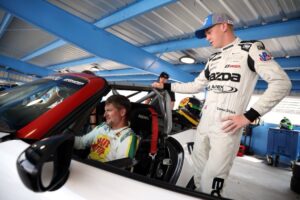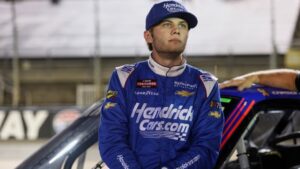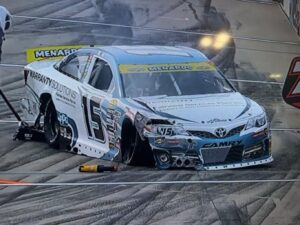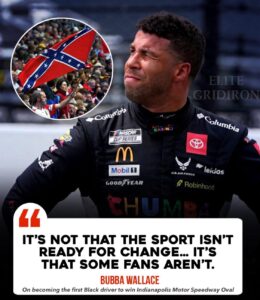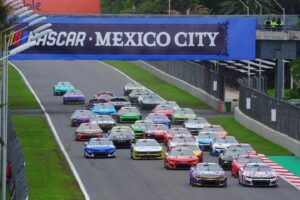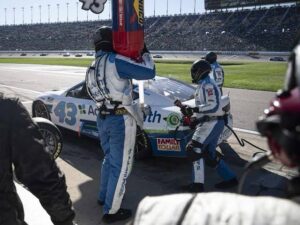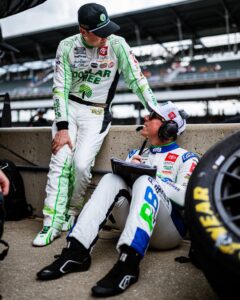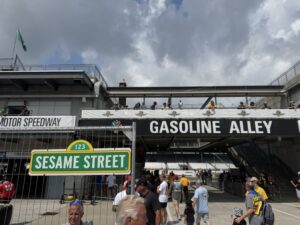In a year marked by unpredictable weather wreaking havoc on NASCAR’s schedule, a major team has stepped forward with a bold, $80 million proposal to combat the growing issue of rainouts and cancellations. The idea, while ambitious, is being touted as a “feasible” long-term solution that could protect the sport from the disruptions caused by extreme weather.

A Problem Too Big to Ignore
The 2024 NASCAR season has been plagued by unprecedented weather challenges. Multiple races have been delayed, postponed, or even shortened due to rain, lightning, and severe storms. These disruptions have impacted both fans and teams, with packed grandstands left empty as races get rescheduled, sometimes for weekdays when attendance and TV ratings suffer.
The increasing frequency of weather-related interruptions has led to significant financial losses for tracks, sponsors, and teams. Additionally, it has created logistical headaches for fans, many of whom travel long distances and invest heavily in attending races. With climate unpredictability seemingly on the rise, it’s a challenge NASCAR can no longer afford to ignore.
The $80 Million Solution
Enter a prominent NASCAR team, which has proposed an $80 million solution: a combination of infrastructure upgrades and technological advancements aimed at making racing possible in nearly all weather conditions.
The proposal hinges on three main components:
1. Track Drainage and Surface Enhancements
Advanced drainage systems and water-resistant racing surfaces would allow tracks to dry significantly faster after rainstorms. Similar technology has already been implemented in some motorsports venues worldwide, and the team believes NASCAR tracks could follow suit with a relatively modest investment.
2. Modular Canopies for Select Tracks
The plan includes the installation of modular canopies or rainproof coverings at high-risk tracks. While building permanent domes over tracks would be prohibitively expensive, this team suggests collapsible canopies for oval and road courses where weather cancellations are most frequent. Tracks like Daytona and Talladega, which have suffered multiple delays, would be top candidates for this upgrade.
3. Advanced Wet-Weather Tires
NASCAR teams have already begun experimenting with wet-weather tires for short tracks and road courses. This proposal would fast-track their development and expand their use to larger ovals, allowing cars to race safely under light rain conditions.
Industry Reaction
The proposal has sparked debate within the NASCAR community. Many industry insiders view it as a necessary step toward modernization. “It’s not just about saving races; it’s about preserving the fan experience,” one track operator noted. “If fans can rely on races happening as scheduled, regardless of weather, the sport becomes more sustainable.”
However, some have expressed skepticism about the hefty price tag. Critics argue that smaller, independently owned tracks may struggle to afford the proposed upgrades, even with financial support from NASCAR and major teams. Others question the practicality of implementing such systems across the diverse range of tracks on the NASCAR schedule.
NASCAR’s Response
NASCAR officials have acknowledged the challenges posed by weather but have yet to commit to any specific plans. “We are always exploring solutions to ensure a better experience for our fans and stakeholders,” a spokesperson said. “While this proposal is intriguing, it will require careful evaluation to determine its feasibility and impact on the sport.”

The Bigger Picture
As NASCAR faces mounting pressure to adapt to the realities of extreme weather, the $80 million plan represents a potential turning point. While the costs are significant, the investment could pay off by minimizing disruptions, ensuring consistent race schedules, and protecting the sport’s long-term viability.
For now, the ball is in NASCAR’s court. Whether this ambitious proposal becomes a reality or remains a pipe dream will depend on the willingness of teams, tracks, and stakeholders to embrace change. One thing is clear: the days of waiting helplessly for the rain to stop may soon be a thing of the past.
Would you like me to incorporate specific details about how these proposals could impact fan experiences or driver performance?
















